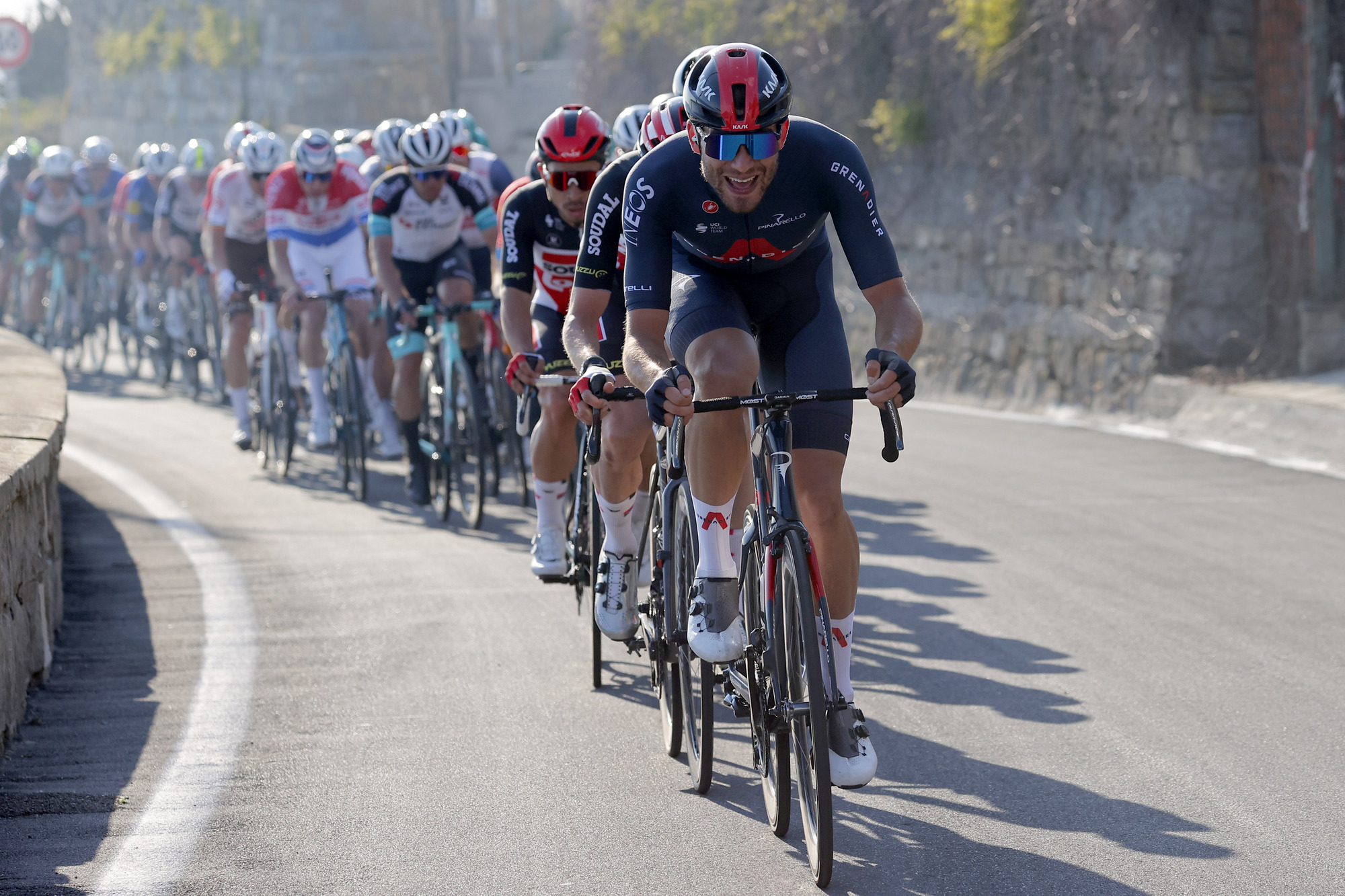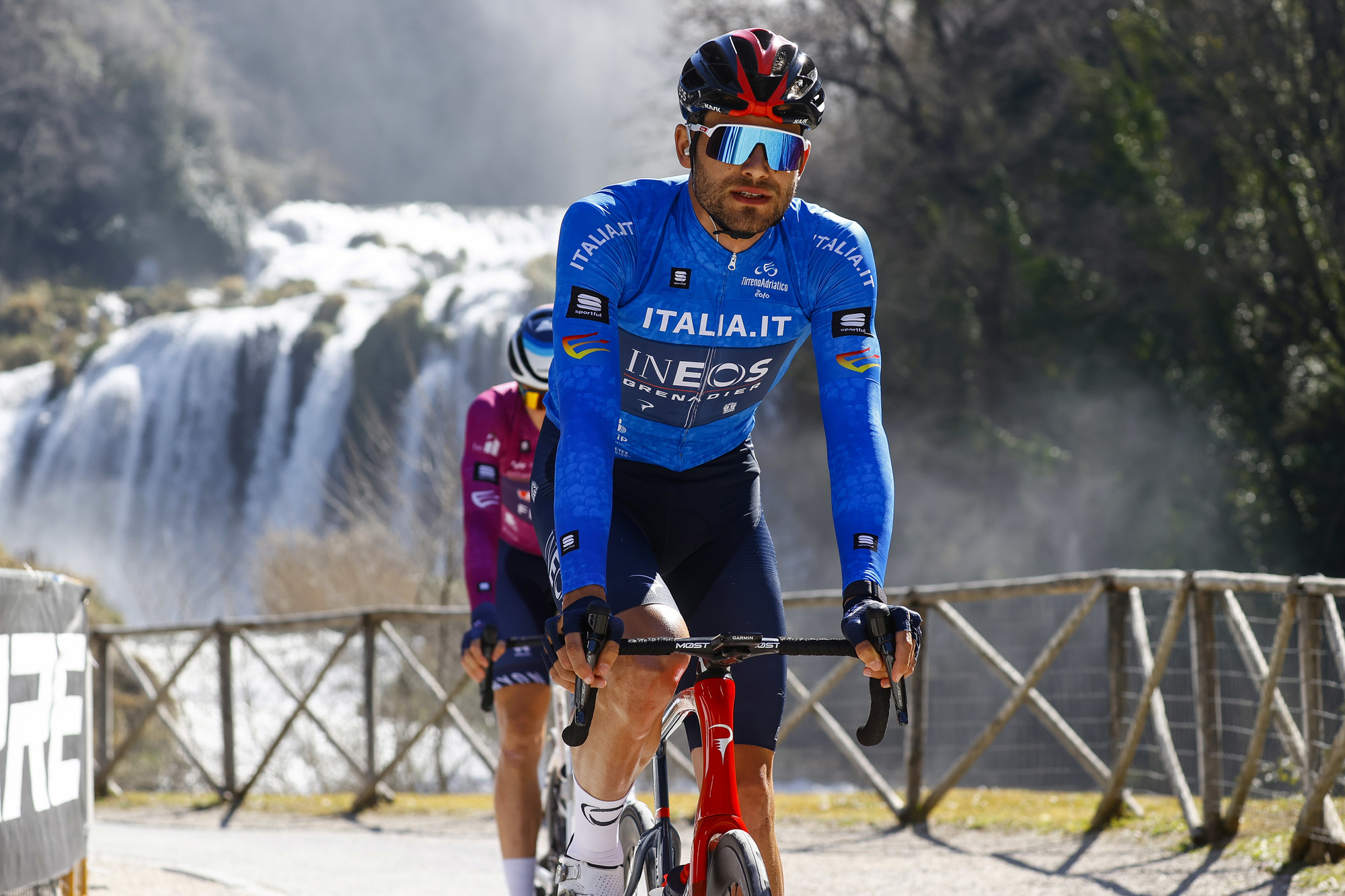Milan-San Remo: Ganna dreams, Italy expects
Criticised last year, Ineos rider returns to shoulder home hopes of a successful late attack

Can anyone stop Tadej Pogačar winning Milan-San Remo? Is there anyone able to go with the Slovenian, or Belgian Wout van Aert, when the attacks come on the Poggio? Is anyone able to repeat Jasper Stuyven’s late attack of 2021 and raise their arms on the Via Roma?
In Italy, they are hoping Filippo Ganna has all the answers to the myriad of Milan-San Remo questions. So too are Ineos Grenadiers after struggling to take on rival super teams Jumbo-Visma and UAE Team Emirates in recent weeks.
Ganna has the weight of the home nation on his shoulders. 2018 winner Vincenzo Nibali (Astana Qazaqstan) is past his best and recovering from COVID-19, while Paris-Roubaix winner Sonny Colbrelli (Bahrain Victorious) is out due to bronchitis. No other real Italian contenders stand out on the start list for Saturday.
Just a year ago, Ganna was a future star of Italian cycling, appreciated by the cycling experts but relatively unknown. A year on, after his gold medal at the Tokyo Olympic Games and second time trial world title, he has taken over the top-billing long reserved for Nibali. He is now the face of Italian cycling and so expected to win Milan-San Remo, even against the likes of Pogačar and Van Aert.
Ganna has become popular in Italy because of his laid-back, down to earth approach to his racing and life. He is ambitious and focused on the details, as time triallists and track riders naturally are, but is able to shrug off pressure and expectation, even when it comes from the Italian tifosi, desperate for one of their own to win.
The specialist Italian cycling media thought Ganna deserved a leadership role and a shot at victory at last year’s Milan-San Remo. When he sacrificed his chances for Michal Kwiatkowski and Tom Pidcock, apparently due to a slight illness, monthly magazines like Bicisport and the website Tuttobiciweb were not happy, convinced he had failed to show leadership and Ineos Grenadiers had sacrificed him as a simple domestique.
"Wake up Ganna, you could have won Milan-San Remo," was the headline in Bicisport, who also also tried to find out who had ordered Ganna to work on the Poggio rather than making an attack.
Get The Leadout Newsletter
The latest race content, interviews, features, reviews and expert buying guides, direct to your inbox!
Ganna responded via social media, insisting that the tactical decisions were made because he had been ill in the days before Milan-San Remo. "Let’s not all play at being a DS with all the if's and but's," he said.
To fight off any similar criticism this year and to reflect his new status in the sport and within Ineos Grenadiers, Ganna is not shying away from the responsibility and has made it clear he is ready for a leadership role.
He should have ridden Paris-Nice as he prepares to make his Tour de France debut in July but pushed to instead ride Tirreno-Adriatico and enjoy a true Italian build-up to Milan-San Remo. He won the opening time trial stage of the Italian race and kept the leader’s blue jersey for three days. He also talked openly about targeting Milan-San Remo, ready for any criticism.
"My shoulders are pretty large and so I can handle the expectations," he said when asked by Cyclingnews during Tirreno-Adriatico.
"Can he win Milan-San Remo?" we asked, to the pleasure of the Italian media.
"Who knows? Nothing is impossible," he replied, seemingly accepting the challenge.
Ganna’s alternative winning strategy

Matteo Tosatto was the lead directeur sportif at Tirreno-Adriatico. He spent the week carefully psyching up Ganna and his teammates for Milan-San Remo, as only an Italian and former rider can do.
"I rode Milan-San Remo 17 times as a rider. The important thing I always tell my riders is that they really have to feel the importance of the race, like every Italian rider does," Tosatto told Cyclingnews.
"That means feeling some pressure but the right kind of pressure, to be motivated for one of the most beautiful races of the season. Filippo feels that but is also ‘tranquillo’. When he senses a big goal is coming up he’s focused and always ready to race. He’s also honest and ready to say what he can and can’t achieve."
There is a lot of speculation about how Pogačar can try to win Milan-San Remo, how he and his UAE Team Emirates squad will try to shake out the peloton and the sprinters on the Cipressa so that he can try a solo attack on the Poggio.
Ganna and Ineos Grenadiers face a similar dilemma. Ganna is not a fast finisher and so needs an alternative strategy. That could include going in any attack on the Cipressa, going early on the Poggio using his incredible time trial torque, or even a late attack on the flat roads after the descent of the Poggio.
They are just three of the many different possible scenarios that make Milan-San Remo so finely balanced and so unpredictable.
"Everyone decides their own tactics based on the riders they have and who their leader is. UAE Team Emirates have Pogačar and so if they want to win, they’ll have to try to create a harder race, quite different to the strategies of a number of other teams," Tosatto said, hinting that Pogačar’s hopes could go against the natural tactical denouement of Milan-San Remo.
"That could be risky for them but they’ve got nothing to lose after winning so much in the last few weeks. We’re not under pressure either but we’ll keep what could be our perfect race strategy a secret. The important thing is that all the guys are fit and healthy for Saturday," Tosatto added, aware that Elia Viviani had quit Tirreno-Adriatico due to illness and that Ganna did not feel well after the race.
Attack late like Fabian Cancellara in 2008
Ganna is able to produce his huge time trialling power and yet also make gravity-defying efforts on climbs. He produced beyond-his-weight rides at the Tour de la Provence and the UAE Tour to fight for race leadership, confirming he is far more than just a time triallist.
During Tirreno-Adriatico he was spotted going deep in the hilly stages, apparently replicating the eight-minute efforts needed to go with Pogačar and van Aert on the Poggio.
"I need some hours of racing and some quality too, so we used Tirreno-Adriatico to do some work and some testing," Ganna admitted coyly to Italian website BiciPro.
Ganna’s career appears to be tracking that of Fabian Cancellara. The Swiss rider was able to harness his time trial power and use it strategically to win the Tour of Flanders and Paris-Roubaix three times.
Cancellara rode Milan-San Remo 10 times, finishing in the top three five times between 2008 and 2014. Yet he won it just once, in 2008, when he attacked alone in the final flat kilometres after the descent of the Poggio. When Cancellara opted to wait even for a small group sprint finish, he was beaten every time by someone faster.
A late attack, just like Styuven’s surprise move last year, or that of Andre Tchmil in 1999, was Cancellara’s best option. It appears an ideal strategy for Ganna too if he can make it over the Poggio with the leaders and then jump them on the flat final kilometres that divide the end of the descent and the Via Roma finish line.
It is perhaps a scenario Ganna has dreamt about but he is trying to stay realistic.
"It’s a dream scenario but exactly that, something you’d seen in a movie," Ganna joked to BiciPro.
Of course, Ganna has watched the video of Cancellara’s 2008 winning attack and those of others, who were caught before the finish line.
"There are lots of great videos to watch of the Milan-San Remo finish. But the fact that in recent years the same rider has never won twice indicates that it’s a wide open race," Ganna explained, without ever denying that a late attack could be his best race strategy.
"You’ve got to think carefully about making certain attacks because after you’ve raced for almost 300 kilometres, anything can happen and every detail can be important."

Stephen is one of the most experienced member of the Cyclingnews team, having reported on professional cycling since 1994. He has been Head of News at Cyclingnews since 2022, before which he held the position of European editor since 2012 and previously worked for Reuters, Shift Active Media, and CyclingWeekly, among other publications.